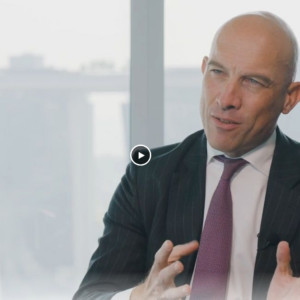Danske scandal should lead to renewed scrutiny of new clients
As investigators pick through the aftermath of a scandal that connected Russian clients with a leading Danish bank, facilitated by a Baltic branch, Europe’s private wealth managers are taking a sharp collective intake of breath. Many will be forced to further raise their guard against potential money launderers and tighten client onboarding procedures, particularly verifying wealth sourced from developing nations.
When it was disclosed in March 2017 that a small overseas branch of a Danish bank had been used by alleged Russian money launderers to move hundreds of billions of dollars, there was widespread amazement and shock. It was as if the entire campaign to guard European banks against exposure to money laundering had never happened.
Private warnings were sent to the Danish Financial Services Authority (DFSA), as early as June 2007. The first was from the Russian Central Bank, addressing concerns about business conducted by Danske Bank customers at its Estonian branch. Twelve years later, investigations are still underway in Denmark, Estonia, the United States, France and Italy.
Independent report
The story of the ‘Russian Laundromat’ is described in an independent report by Danish lawyers Bruun & Hjejle, commissioned by Danske and subsequently published in September 2018. When the scandal broke, Danske was the second largest Nordic bank and, until this point, untouched by accusations of impropriety.
At its peak, Danske’s non-resident portfolio, around which suspicions surfaced, contained around 10,000, exceptionally active accounts held, by predominantly Russians citizens. B&H reported that more than $200bn flowed through these accounts in the years from 2007 to 2015.
The DFSA passed the Russian Central Bank warning onto Danske Bank, which reassured the regulator that the bank had done its due diligence duties. Another seven years passed before increasing pressure led Danske to eventually remove suspicious clients.
Yet the Russian warning had been stark. Clients of Sampo Bank, it read, “permanently participate in financial transactions of doubtful origin” estimated at “billions of rubles monthly”. Sampo was a Finnish bank bought by Danske in 2006, with operations in Russia and the Baltic states. The Russians cited tax and customs payments evasion and “criminal activity in its pure form including money laundering”.
Concerns resurfaced in 2012 when the Estonian regulator wrote to the bank, that “the relatively big concentration of the business relationships from risk countries in Branch is not accidental”.
One again, the Danske board tried to calm matters, replying to the Estonian authorities: “We are fully aware that the customer database of Sampo Pank Estonia includes a number of high risk customers. However, we are confident that the control setup corresponds to the actual risk.”
This confidence of senior bank managers in Denmark was not however shared by Danske’s Group Compliance and AML (anti-money laundering) department. They sent an email on April 7, 2013, to the Estonian branch describing some of its Russian clientele, according to the B&H report, as “our black-listed Russian customers”.
Other banks were less sanguine about Danske’s ability to manage questionable clients. JP Morgan, which acted as a correspondent bank, clearing US dollar payments, told Danske it was pulling out, citing AML concerns. Internal reviews of the non-resident portfolio followed, expressing concerns over the Estonian branch’s “over-normal profit” and “unexpected business volume”. The use of intermediaries to represent ultimate owners of funds triggered another red light.
The Danske scandal’s standing changed dramatically from an internal auditing and regulatory matter to a concern about massive reputational damage on December 27, 2013. This was the date an email headed,‘Whistleblowing disclosure - knowingly dealing with criminals in Estonia branch,’ hit the inboxes of an executive board member and the head of Audit, among others.
It came from Howard Wilkinson, British-born head of markets at Danske’s Estonia’s branch since 2007 and an authoritative figure in the bank. He had discovered the connection between Danske’s Estonian branch and Russian flight capital. He wrote that the bank “knowingly continued to deal with a company that had committed a crime”. He stated an employee had been required to fix “false financial accounts” to enable a customer to stay with the bank.
The identities of a further three suspicious clients with “similar irregularities” were identified by the whistleblower a month later. This led to pressure to close a business line linked to suspicious non-resident clients. An executive board member stated on February 5, 2014, that “the bond/intermediaries business has to be closed down immediately”. Another called for assurances that “this case does not go off track, if it has [not] already been handled”.
Slow going
But the process of “cleaning” the portfolio was a slow one. The last account was only closed in early 2016, a year after the process began. When a consultancy was hired to probe “allegations of misconduct” and obtain “critical information on a number of irregularities involving senior members of staff”, two executive board members objected. Group Legal appeared eager to lower the impact of Mr Wilkinson’s allegations, asking Group Compliance and AML to bring “this whistleblower matter to an end”.
Internal inactivity was matched by growing regulatory criticism from the DFSA in 2015, but the gravity of the Estonian mismanagement only hit home when a report in the Danish Berlingske publication appeared on March 17, 2017. This claimed Moldovan authorities were investigating allegations of a $20bn Russian laundering scheme. Berlingskethen contacted Danske Bank a week later, claiming customers at its Estonia branch were cited in allegations made by Hermitage Capital Management in a US civil forfeiture complaint.
Estonia had been used by Russian officials to launder a $200m tax payment made to the Russian state by Hermitage and subsequently stolen, said Bill Browder, Hermitage’s CEO and architect of the Magnitsky Act.
Mr Browder claims that up to $1tn could have passed through the Estonian banking system, describing funds as “flight capital and proceeds of corruption leaving Russia and needing to be legitimised by going through an EU country before reaching the final destination.”
Hermitage Capital had a whistleblower of its own in Danske’s Estonian branch. He had described how the branch arranged offshore companies, nominee directors and documentation for Russian clients, charging 40 basis points of their funds.
After pressure from Mr Browder, the Danish public prosecutor laid four preliminary charges against Danske under the country’s anti-money-laundering act in November 2018. Prosecutors accused the bank of not having reported “a significant number of suspicion transactions” to Danish and Estonian authorities. They also criticised the bank’s board for closing down the Estonian non-resident business at the heart of the scandal “without ensuring that investigations into the customer relations and transactions were made”.
The extraordinary failures may best be explained by a lapse in governance, believes Shelby du Pasquier, head of the private banking and financial services practice at Geneva law firm Lenz & Staehelin. He speculates that the branch compliance officer should have passed on concerns to head office.
“This would have made the concerns known at the bank’s top table and action could have been taken. But it seems possible he only passed the concerns onto his immediate superior in the branch. If this was the case, there was a real risk that they would have been buried and no action taken.”
He says alarm bells should have sounded as soon as local managers noticed the huge volumes of suspicious transactions flowing through their retail branch. Auditors should also have picked up such patterns. “They had an overview of the situation, much more granular than the regulator; they were probably auditing the accounts of the entire group. It is striking that nothing came up.”
An IT failure has also been blamed for supervisory lapses. At the time of the Estonian branch’s acquisition, Danske did not invest in an IT platform which would incorporate new branches onto the existing platform.
Exceptional pressure
Economic factors may also have played a part, according to Graham Barrow, an independent consultant, familiar with the events.
“It is critical to remember the timing of the affair,” says Mr Barrow. “We are at the start of the 2007 economic crisis, and Danske was under exceptional pressure to preserve its revenues.”
Another consultant, who did not want to be named, says the Danish banking sector has long underperformed its peers and could not afford to jeopardise so profitable a line of business.
Danske says it expects to be charged by Danish prosecutors. following the release of its own report. During a visit to Copenhagen in mid- January, Mr Browder urged the public prosecutor to act against the bank. The case in Estonia has already led to the arrest of seven Estonian branch officials.
A Danske Bank spokesman told PWM: “Danske Bank has been preliminarily charged by the Danish State Prosecutor for Serious Economic and International Crime (SØIK) with violating the Danish Anti-Money Laundering Act on four counts all relating to Danske Bank’s Estonian branch in the period from 1 February 2007 to the end of January 2016. The preliminary charge is the result of an investigation initiated by SØIK in August last year. We are cooperating with the Danish police, but at this point we do not have any further updates on their investigation.”
The revelations have led to a marked increase in suspicious activity reports submitted to Danish law enforcement agencies, says Kjeld Gosvig-Jensen, head of legal affairs at Finans Danmark, the banking sector trade body. Local banks have also boosted the strength of their AML departments.
“The Danske Bank affair has damaged the reputation [of Danish banking] among Europeans and amongst the Danes, and that is what we have recognised,” says Mr Kjeld Gosvig-Jensen. “We are using it as a positive way of dealing with things, hereafter. You cannot undo what has been done.”
This salutary tale is all about going back to basics and tightening internal controls at banks, one well-placed money laundering consultant tells PWM. “It is the first rule of due diligence that you investigate the sources of funds, especially when you have the slightest suspicion about their provenance.”



